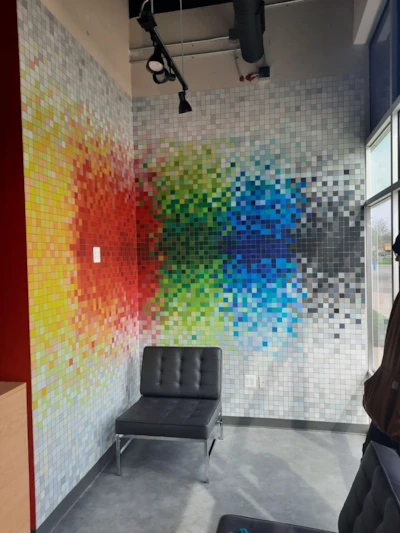7/27/2022

You’d be hard pressed to name a business or industry that doesn’t benefit from clear directional signage, eye-appealing promotional signage or branded signage that drives recognition for the company. Signage is one of the foundational basics necessary for a business or organization to thrive.
Of course, the look and quality of indoor signage and displays, building and outdoor signage, promotional banners, and wayfinding signs are only parts of a successful equation. Proper sign installation performed by skilled professionals may be the most critical step of all.
Crooked posts. Bumps and bubbles on wall applications. Uneven edges. These types of installation errors and more can leave a client, patient, visitor or passerby thinking there may be a lack of professionalism or general carelessness with other business practices. When first impressions (and second, third and fourth!) matter, why risk it?
Here are the top four considerations when you want to be sure your signs and graphics are picture perfect after installation:
Like any home handyperson knows, having the proper tools not only makes the job easier but ensures you’re not taking any shortcuts that can eventually reveal limited skills of a do-it-yourselfer.
Simple hand tools, like screw drivers, hammers, squeegees and power drills plus more sophisticated and powerful tools like post drivers and pullers ensure a sign installation job is performed correctly when placed in the right hands. Essential brackets, bolts and other signage hardware help to safeguard proper and timely installation for long-lasting results. Most high-end tools are costly and have specific uses. They are typically not needed by anyone other than professional sign installers.
Sometimes you can visualize a result to your sign installation plan but may not have the specific vocabulary or industry jargon to describe it. That’s totally fine! What’s important is that your installer knows how to bridge any communication gaps. Plus, you know more than you might think. For example, something easy to grasp onto is your environment.
There are so many types of outdoor signs and vehicle graphics that are meant to stand up to the elements. And that may mean something different depending on your geography. Desert heat versus heavy snows; high winds versus near-constant rain. Each requires a considered approach to durable installation. When you move inside, heavy foot traffic will play a role in the installation of floor graphics, and a wall’s texture will matter for murals, signage and other surface graphics.
We all have the best intentions, and early planning for the entire scope of a project helps everyone who contributes to it to do their best work. The last step of the project – installation – can sometimes be the only place where you can play catch-up. Rest assured, professional installers are used to working efficiently to meet their clients’ deadlines without taking shortcuts. Training, knowledge and experience (and the right tools!) can make up for lost time. Which brings us to . . .
We do! The reality is some of the best-laid plans hit snags with sign projects, big or small, and your professional sign partners understand when some clients have changes along the way. Having the ability to “roll with it” and find solutions for better anchor alignment or finessing cuts to perfection is all part of the process for installation professionals once they are in the actual environment – inside or outside.
Bonus tip: Something you may not have thought about is how lighting affects colors and can create shadows. You can rest assured your vision – however simple or fully imagined – will come to life with professional sign makers and installers on your team who’ve been on hundreds or thousands of job sites. Something looks “off”? It may be as simple as changing cool lightbulbs to warm ones.
The goal is always that you are pleasantly surprised and delighted with the results. That’s the mark of true professionals.